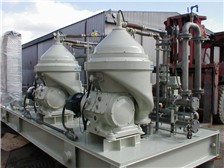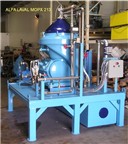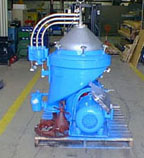10 May 2010
Iran's alleged clandestine pursuit of a nuclear-weapon capability dominated the headlines last week during the ongoing Nuclear Nonproliferation Treaty (NPT) Review Conference. However, beyond the theatrics of President Mahmoud Ahmadinejad and U.S. Secretary of State Hillary Clinton's verbal exchange, it is important to remember, and ultimately to address, the root cause of the Iranian nuclear problem -- namely, the spread of dual-use technologies such as uranium enrichment to countries outside the ring of first-order world powers.
The problem with uranium enrichment is its ambiguity: It is a vital component of the civilian nuclear power industry, yet it can also be used to produce fissile material for nuclear weapons. The same centrifuges that enrich natural uranium to the levels required by many civilian power reactors can also enrich uranium to the high levels required by nuclear bombs.
Since uranium enrichment cannot be banned outright or limited to certain states by fiat, voluntary solutions must be found that make multilateral enrichment programs more attractive to states than pursuing their own national uranium enrichment programs. Coupled with an international norm discouraging the spread of national uranium enrichment facilities, states could then profit from enrichment while making the sovereign choice to eschew national control over the technology.
In recent years, several states have proposed various multilateral approaches to uranium enrichment. The most far-reaching proposal came from Germany, which called for the creation of a uranium enrichment center on international territory -- similar to the territory occupied by the U.N. headquarters -- controlled and administered by the International Atomic Energy Agency.
Two Russian proposals, however, have gained the most traction.
The first, the International Uranium Enrichment Center at Angarsk, is already up and running in central Russia. The IUEC is essentially an international joint stock venture. States that buy shares in the center gain a voice on its management board and access to its services. However, only Russia operates the facility and has access to the enrichment technology. The shareholders also receive dividends from the sale of enrichment services, enhancing the appeal. Currently, Armenia, Kazakhstan and Ukraine participate in the IUEC, along with Russia.
Secondly, Russia and the IAEA have agreed to establish an international low-enriched uranium (LEU) fuel bank at Angarsk. The fuel bank concept is similar to insurance for states that choose not to develop their own domestic enrichment facilities. If the supply of reactor fuel to an importing state were cut off for political reasons, it could apply to the fuel bank through the IAEA for an emergency shipment of LEU. The guarantee would not apply in cases where the importing country had violated its safeguards obligations or defaulted on bilaterally contracted payments.
Together, the IUEC and Angarsk fuel bank provide a compelling alternative model to nationally controlled enrichment centers. Participating states would avoid the high capital investment costs of developing indigenous enrichment facilities, while maintaining assurance of supply. The cost of importing uranium could be offset by dividends from owning a stake in the international enrichment center. The importer gains security and cheaper reactor fuel, while sacrificing only the possibility of one day turning a civilian enrichment center into a military one -- a possibility that is forbidden under the NPT anyway, unless the state first withdraws from the treaty.
Media reports indicate that Argentina, Brazil, Egypt and South Africa were among the eight states that voted against the Russian fuel bank proposal when it came up for a vote at the IAEA in November 2009. Argentina, Brazil and South Africa are influential middle powers with relatively developed nuclear sectors. Egypt, while it has no nuclear program, is a leader of the large Non-Aligned Movement, whose 100-plus members are the largest bloc at the NPT Review Conference. These states fear that multilateral approaches to the fuel cycle will ultimately limit states' access to the peaceful uses of nuclear energy, a right that is enshrined in the Nonproliferation Treaty.
This reluctance has stymied a separate fuel bank proposal under which the IAEA would directly own and manage a supply of LEU. This proposal was put forward by the non-governmental Nuclear Threat Initiative, which offered to donate $50 million to the project if IAEA member states raised an additional $100 million. This condition was met in March 2009. However, the IAEA has been unable to forge an agreement to implement the proposal.
As a result, Russia has taken the lead on the issue of devising multilateral approaches to the nuclear fuel cycle, with the strong support of the United States. Together, and with their partners, they should work at the current NPT Review Conference to persuade skeptical states of the benefits of voluntary, non-political international uranium enrichment arrangements, as well as of the risks posed by the unchecked spread of enrichment technology to new states. A strong endorsement of the Russian proposals at the review conference will build momentum for multilateral approaches in other decision-making bodies, such as the United Nations and the IAEA, as well as in bilateral discussions between states.
The Iranian nuclear horse is already halfway out of the barn. Preventing a further fraying of the nonproliferation regime that has served the world well for four decades requires an attractive international alternative to national uranium enrichment. The international community must make a serious diplomatic effort to develop and agree on such measures, in order to manage the nuclear issue in the 21st century.
source: www.worldpoliticsreview.com












